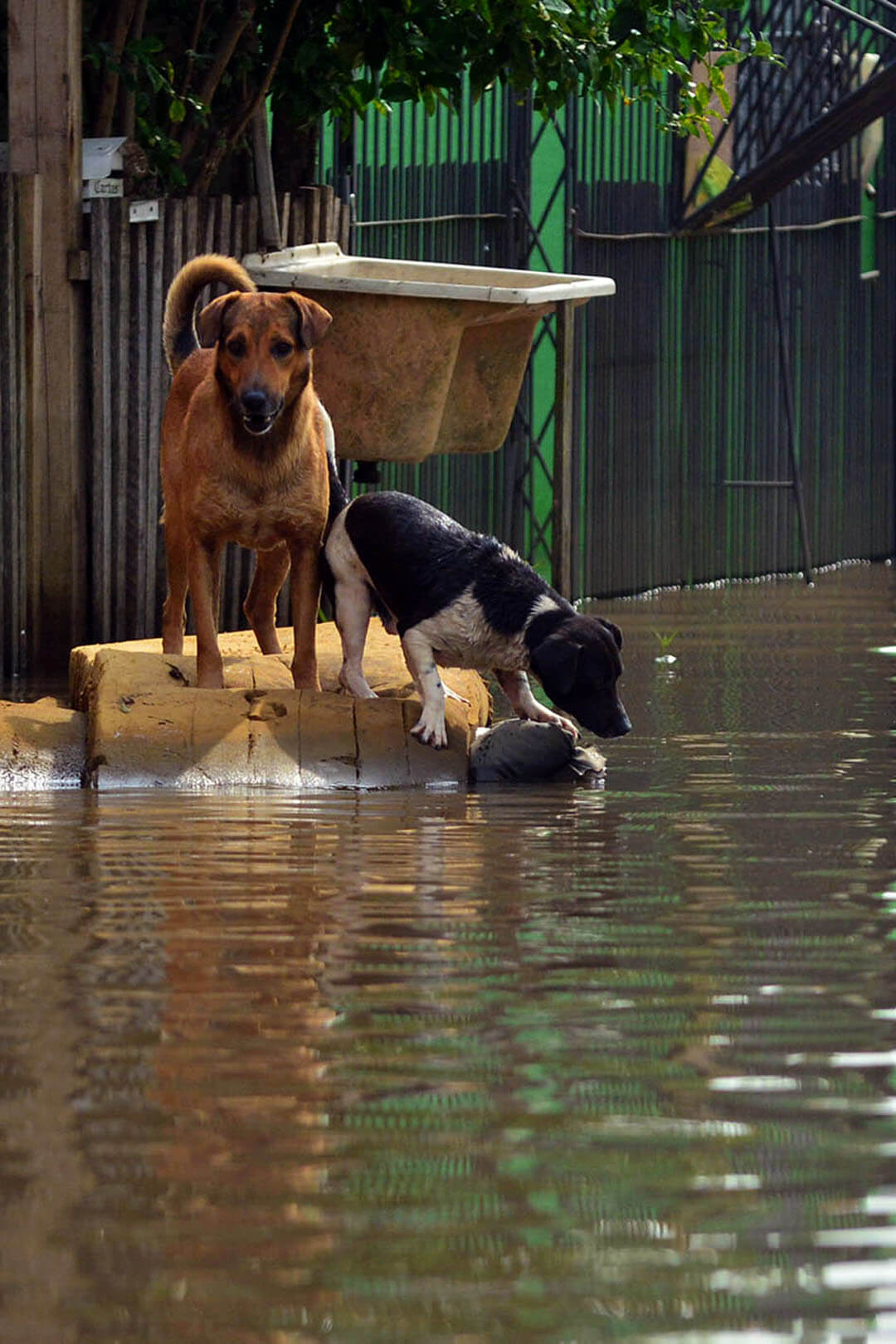We’re all pretty accustomed to thinking about disaster preparedness for ourselves and our (human) loved ones. There are plenty of resources available to educate people on planning evacuation strategies and making lists of necessary supplies.
But what about your pet? How should you help them prepare if there ever was a disaster?
Well, you’re about to find out. It’s National Animal Disaster Preparedness Day! Today is about understanding how pet parents can incorporate their pets into the disaster plan.
Staying Home During A Disaster
If you plan on hunkering down in your home during a disaster, make sure you have extra pet food and an extra supply of water on hand to meet their needs. As a rough rule of thumb, a cat or dog needs 2 ounces of water (1/4 cup) for every kilogram of body weight (about 2 pounds) per day. That’s 1 ounce per pound per day.
So for example, a 10-pound cat or dog would need about 10 ounces of water every day — that’s a little over one cup. If it’s hot outside, or they have to pant a lot to keep their cool, they may need 2 or 3 times that much, but that is a good starting point.
When you do make a disaster plan, remember to keep any medications that they may need on hand. If a tornado blows through town or an ice storm knocks the power out for a week, you may not be able to get to the veterinarian’s office to pick up a refill, so try not to let the prescription run low, and keep extra on hand for emergencies. This is much more important if it is a lifesaving medication like those used to treat heart conditions.
Make sure they have a collar with identification that has up-to-date information, including your phone number. Folks move all the time, and it is easy to let this one slip. If your pets get separated from you during an emergency, an ID tag can be an important link in the chain of reuniting you all. Microchips can also be implanted under the skin of dogs and cats, and if your pet gets lots most shelters have microchip readers that will display your phone number.
Evacuation Plans
If you have to leave your home due to dangerous circumstances such as a fire, keeping control of your pets is important to their safety and theirs. Getting a cat in a carrier is best, but sometimes that can’t be done. Tossing them in a bag or pillowcase will do in a pinch — you can always get them in the carrier when you are in the car and they can’t escape.
For dogs, make sure that you have a leash and collar that they can’t slip out of — many dogs can back out of a loose collar if they really try. Collars that loop around the neck and tighten as the animal pulls are the safest. Luckily small pets like birds and rodents can usually be transported right into their cages.
In case you have to leave the house, keep a small evacuation kit for your pets with you too. Things to consider keeping in the kit would include:
- Leashes
- Bags for cleanup
- Bowls
- A small supply of food
- Medications
- Medical records
- Blankets or pillowcases (for transporting scared pets)
With a little forethought and preparation, you can get everyone in the family, whether they have two legs or four, fur, skin or scales, through a challenging emergency!


